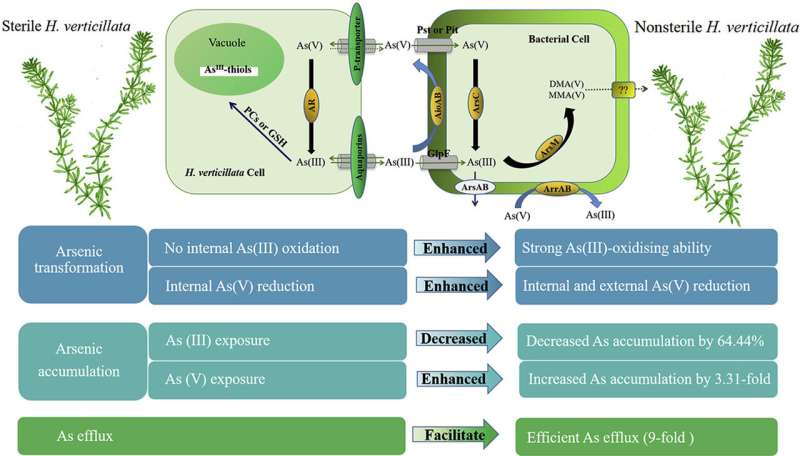Study highlights the role of epiphytic bacteria in arsenic metabolism in hydrilla verticillata

Arsenic (As) is a class 1 nonthreshold human carcinogen that is ubiquitous in the natural environment. Aquatic submerged macrophytes have attracted considerable attention recently for their phytoremediation potential of As contaminated waters. The water purifying function of the macrophytes is most likely attributed to the role of the composite system (the plant—epiphytic bacteria system), which remains largely unknown.
Previous studies have confirmed that diverse epiphytic bacterial communities are associated with the submerged aquatic macrophytes, whereas very limited information is available on the diversity of As-speciation related bacteria in these habitats. Hence, it is necessary to fully investigate the effect of epiphytic bacterial community on metabolism of inorganic As by submerged aquatic plants. The results will contribute to an overall understanding of As biogeochemistry in aquatic environments.
In this study, sterile or nonsterile H. verticillata was cultured with arsenite (As(III)) or arsenate (As(V)) under laboratory condition to investigate the impact of epiphytic bacteria on As uptake, transformation and efflux by H. verticillata.
The researchers from the Institute of Urban Environment (IUE) of the Chinese Academy of Sciences used a metagenomic approach to understand the diversity of the As metabolism-related gene. Diverse As metabolism genes were detected, such as genes associated with As transportation, transformation, and the relative expression levels of these As metabolic genes. Corresponding enzyme activities determined As speciation, accumulation and efflux.
This study revealed that highly diverse As metabolism genes were present in the epiphytic bacterial community of H. verticillata, which may have a substantial impact on As biogeochemistry in aquatic environments.
The results will promote the understanding of the mechanism of As metabolism, water quality purification, and ecological restoration function of submerged aquatic plants, which may provide theoretical basis for effective phytoremediation of As-contaminated water.
These results have been published in Environmental Pollution in a study titled "Influence of epiphytic bacteria on arsenic metabolism in Hydrilla verticillata."
More information: Zhuo Zhen et al. Influence of epiphytic bacteria on arsenic metabolism in Hydrilla verticillata, Environmental Pollution (2020). DOI: 10.1016/j.envpol.2020.114232
Journal information: Environmental Pollution
Provided by Chinese Academy of Sciences




















